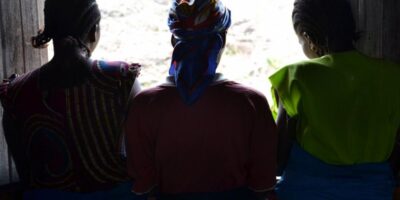“In some places, farmers have abandoned beans and other crops to cultivate sugarcane,” agronomist Evens Joseph explains to AyiboPost
While certain crops are unable to adapt to the effects of climate change, sugarcane cultivation in Saint-Michel-de-l’Attalaye is gaining ground.
A study published in 2020 by a group of researchers from the Haitian Center for Innovation in Biotechnology and Sustainable Agriculture (CHIBAS) at Quisqueya University, and the Center for International Cooperation in Agricultural Research for Development (CIRAD) located in France, illustrates this phenomenon.
Certain municipalities of Saint-Michel have seen areas cultivated with sugarcane increase by more than 200% in recent years, according to the study.
Located in the district of Marmelade in the Artibonite department, Saint-Michel is one of the largest communes in Haiti with an area of 614 km2 (~237 square miles).
While certain crops are unable to adapt to the effects of climate change, sugarcane cultivation in Saint-Michel-de-l’Attalaye is gaining ground.
Known as the commune’s main crop, sugarcane is transformed into derivatives, including the famous “clairin Saint-Michel”, which enjoys a reputation that transcends Haiti’s borders.
“The data collected in the field from farmers suggests that this started after 2010,” explains engineer-agronomist Bénédique Paul, member of CHIBAS, who carried out the agro-socio-economic diagnostic part of the study.
Surrounded by the Black Mountain and the Cahos range, the town of Saint-Michel de l’Attalaye is configured like a “vat”.
This makes this area an “open-air laboratory for studies on climate change in Haiti.”
As such, at least one project from the Ministry of Agriculture, Natural Resources and Rural Development (MARNDR) concerning adaptation to climate change has been underway since 2019 in this commune.
Read also: Le café dominicain commence à faire son nom. Une bonne partie de la production vient d’Haïti.
The comparison between the data collected by researchers on six of the eight municipalities of Saint-Michel in 2020 and those from the general agricultural census published by the MARNDR in 2008 illustrates these changes.
For example, in Lacedras, the sixth municipality of Saint-Michel, the surface area cultivated with sugarcane increased from 8% to 64%, an increase of 700%. That of Camathe went from 38% to 72%. For the third municipality of Bas de Sault, the area cultivated with sugarcane increased from 13% to 40%, an increase of more than 200%.
In 2021, the number of guildives that process sugarcane increased from 2,500 to nearly 3,000 in just six months.
Although he does not have up-to-date figures, the coordinator of the association of guildives of Saint Michel de l’Attalaye, Emmanuel Alexis, reports to AyiboPost a « considerable expansion » of new fields and the establishment of new guildives in Saint Michel since 2021.
“We plan to carry out a new census in 2024 to determine the exact figure. But it is clear that the data has changed considerably,” maintains Alexis while admitting that the insecurity plaguing the Artibonite affects production and sales.
We plan to carry out a new census in 2024 to determine the exact figure. But it is clear that the data has changed considerably.
For the engineer-agronomist Evens Joseph, co-author of the study, various factors, including the persistent craze for “clairin Saint-Michel” throughout the country and the introduction of motorized mills facilitating the transformation of the sugarcane, explain this expansion.
“But global warming remains the key element,” continues the researcher.
In the absence of irrigation infrastructure, Saint-Michel planters practice rain-fed agriculture.
Climatic disruptions which lead to an extension of the dry season affect the agricultural calendar.
To cope with the multiple effects of environmental upheavals, Saint-Michel producers are forced to develop various adaptation strategies.
Thus, certain crops, such as beans, more vulnerable to heat and irregular rainfall, are cultivated less and less.
Others, like corn, are still there thanks to the introduction of new, more adapted varieties.
In 2021, the number of guildives that process sugarcane increased from 2,500 to nearly 3,000 in just six months.
The Artibonite department is one of the areas most vulnerable to extreme climatic phenomena.
A report published in 2015 on the impacts of global warming in Haiti shows the impacts of the latter on the development of certain crops such as corn, coffee, and beans in the Artibonite valley.
The study carried out by the group of researchers from CHIBAS and CIRAD discusses the consequences of climate change on agriculture in the commune of Saint-Michel de l’Attalaye.
Crops deemed less suitable are cultivated less and less.
Read also: The local variety of coffee is disappearing in Haiti
Faced with these changes, sugarcane presents itself as an interesting economic alternative for producers.
Because, not only is it better able to resist drought, it requires less care.
“In some places, farmers have abandoned beans and other crops to cultivate sugarcane,” agronomist Evens Joseph explains to AyiboPost.
Faced with these changes, sugarcane presents itself as an interesting economic alternative for producers.
Severely affected by anthrax in the early 1980s, sugarcane cultivation in Saint-Michel-de-l’Attalaye has regained momentum thanks to research and the introduction of new, more resistant varieties in the fields.
For researchers, however, this flourishing production hides a paradox.
More than 50% of Saint-Michel residents were food insecure, according to 2020 data.
“The withdrawal of other crops, necessary for food, has an impact on the food security of residents,” explains Bénédique Paul.
Other elements, such as the supply problem linked to the lack of infrastructure, explain this situation.
Environmental scenarios show the possibility that climate effects will increase over the years. Particularly in the absence of adequate support.
According to data published by the United Nations Development Program in 2015, without clear and effective strategies for the agricultural sector from Haitian decision-makers, certain crops could lose more than half of their yields.
More than 50% of Saint-Michel residents were food insecure, according to 2020 data.
Thus, despite its great capacity to adapt to extreme temperatures, sugarcane could lose up to 25% of its production by 2100.
For Bénédique Paul, this reflects the need to continue to conduct research and develop more effective adaptation strategies.
English translation by Sarah Jean.
Cover image: two sugarcane cultivators in haiti | © Minustah
Watch this report produced by AyiboPost in 2022 about the famous « clairin Saint-Michel »:
Stay in touch with AyiboPost through :
► Our WhatsApp channel : click here
► Our WhatsApp Community : click here
► Our Telegram canal : click here







Comments